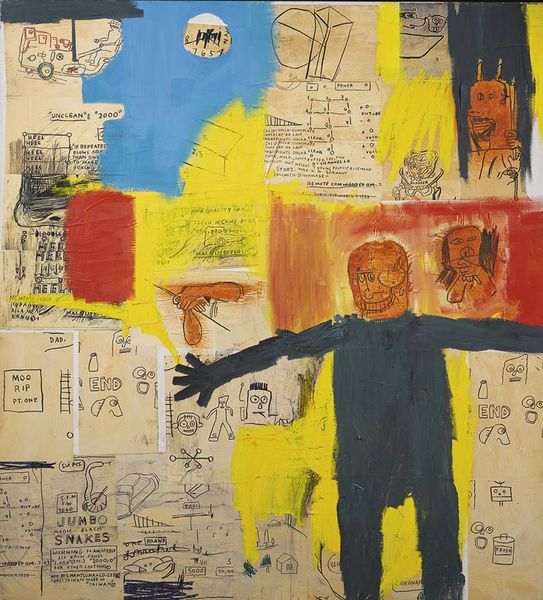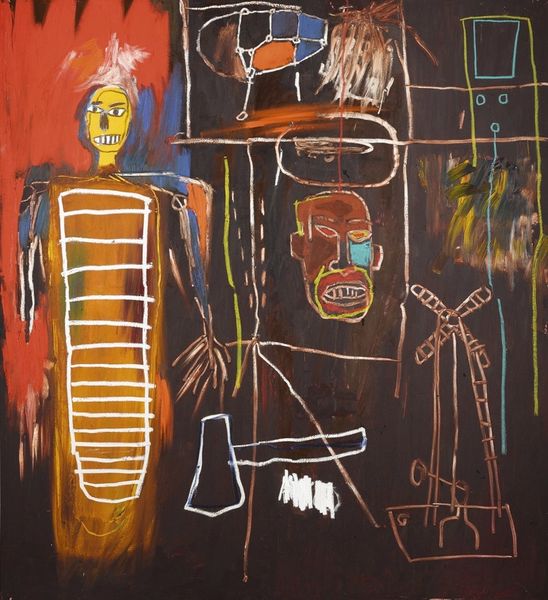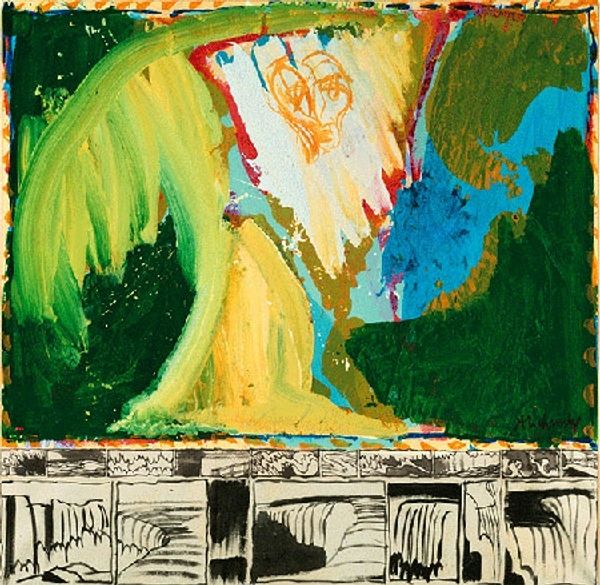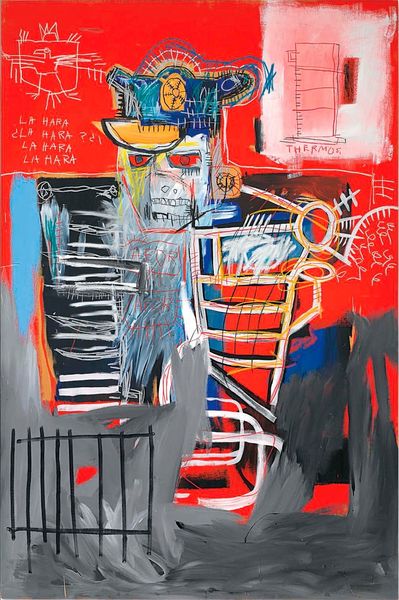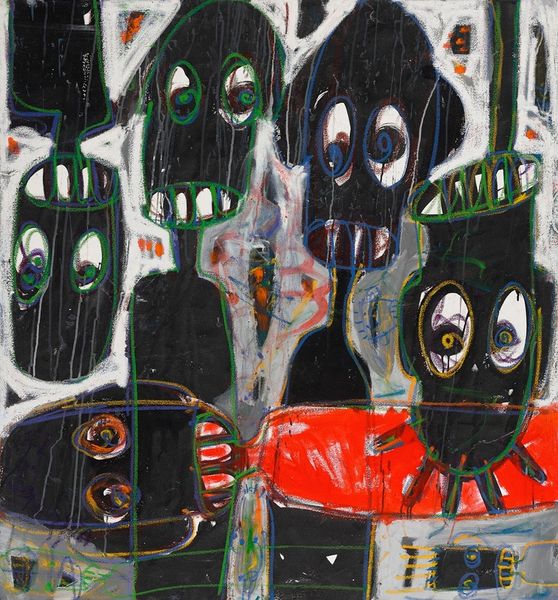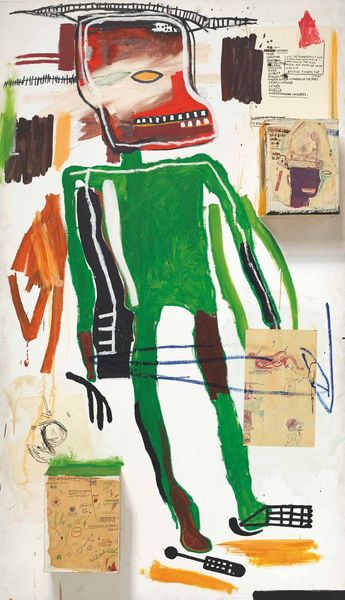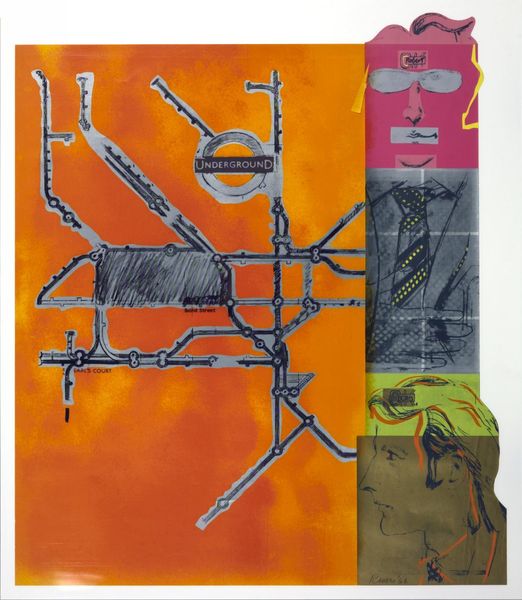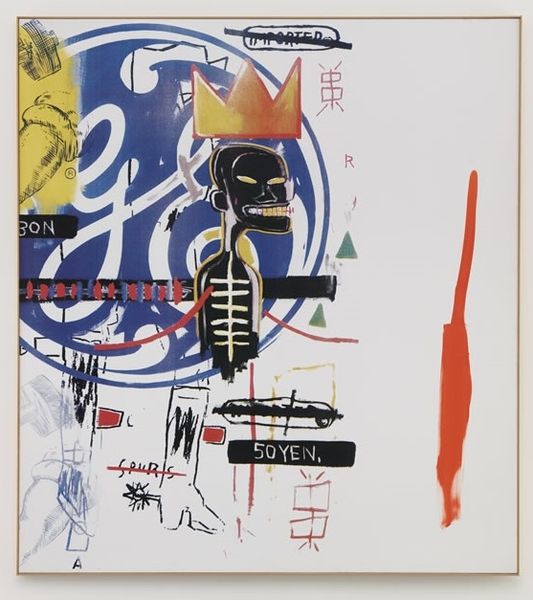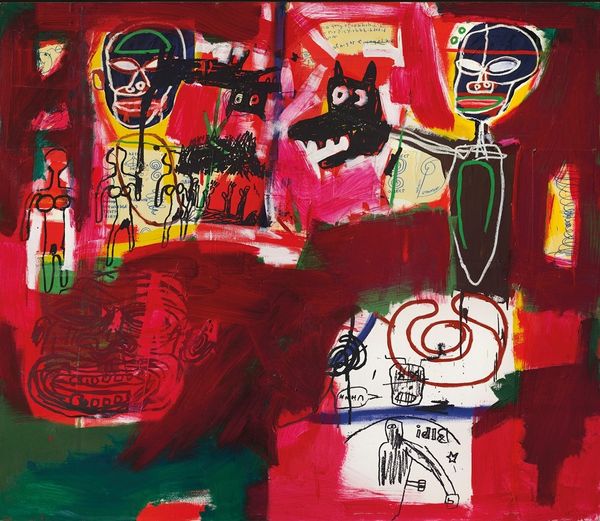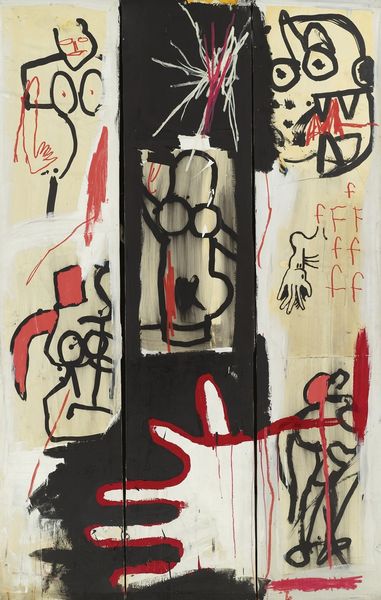
Copyright: Modern Artists: Artvee
Editor: So, this is Jean-Michel Basquiat’s “Rubber” from 1985, a mixed-media piece that includes acrylic paint. The layering is intense, and there’s a sense of chaos and maybe even… anger? What do you see in this piece from your perspective? Curator: For me, “Rubber” is all about the materiality and the socio-political context from which it emerged. Look at the rough application of paint, the collage elements, and the frenetic energy. It’s not just about the image itself but the very act of making and the circumstances in which it was made. Editor: I notice how Basquiat includes scraps of paper within the image. What purpose do those fragments of sketches and other media have? Curator: Precisely. The inclusion of these elements challenges the traditional definition of painting by incorporating everyday materials. These suggest a comment on the artistic process, reflecting the ready-made and the influence of pop art’s culture of mass consumption. The “Rubber” title itself suggests this materiality too, a kind of tension. Editor: So, it's not just about expressing inner turmoil, it is also about the artistic tools, labor and where the art object stands in terms of material value? Curator: Exactly! How is value assigned? What labor creates these works and what statement is being made by presenting high art on repurposed and recontextualized media? Where did those paper scraps come from, and whose labor created them? By considering these aspects, Basquiat critiques the established art world and its hierarchies. Editor: I never thought about it that way before. Thanks, I’m walking away with an entirely new view of Basquiat. Curator: Indeed. Seeing art this way, acknowledging how art incorporates the economic environment in which it emerges, enriches how we interpret any work of art.
Comments
No comments
Be the first to comment and join the conversation on the ultimate creative platform.
